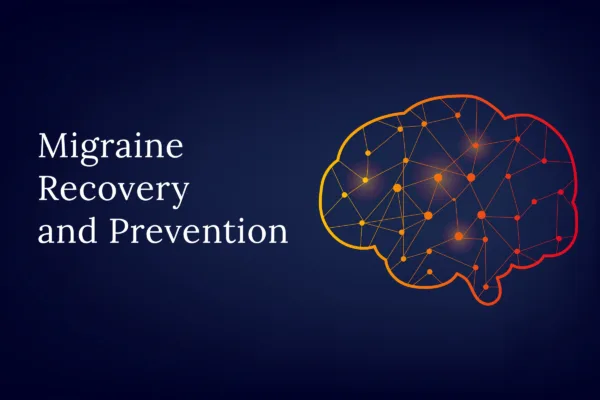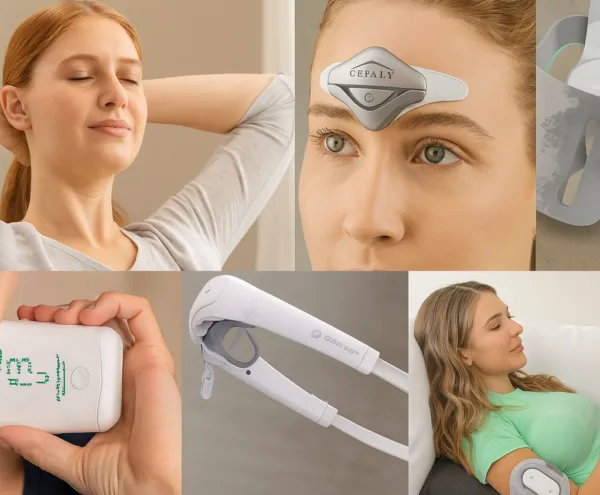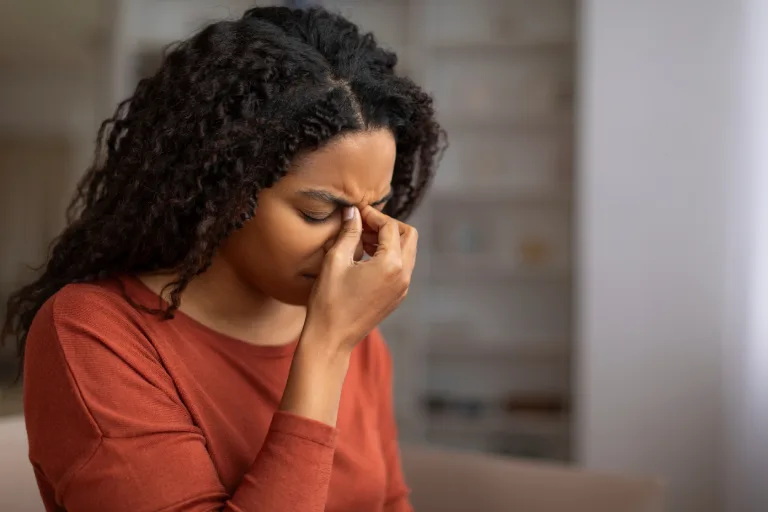Nearly everyone gets a headache from time to time. However, if the pain is severe and occurs often, it can be difficult to tell if you are dealing with a tension headache or a migraine, and how to best treat it.
Tension headaches and migraines are two of the most common types of headaches. While both migraines and tension headaches can cause intense head pain, the type of pain involved, as well as their other symptoms, are usually different. Understanding the type of symptoms you experience can help you distinguish between them and to ensure you get the right treatment.
What are tension headaches?
A tension-type headache is the most common type of headache that causes mild to pain which is often described as having a tight band around the head, putting pressure on your forehead and temples. It is estimated that over 70% of people experience tension headaches, and women are twice as likely to get them as men.
Tension headaches can be classified into three different types based on their frequency:
- Infrequent episodic: Tension headaches, which happen one day per month or less.
- Frequent episodic: Having up to 14 tension headaches every month for at least three months.
- Chronic: Having 15 tension headaches every month for at least three months
Symptoms
The symptoms of tension headaches usually appear slowly. They can last from 30 minutes to several days and often include the following symptoms:
- Dull and aching head pain.
- Feeling tight pressure across the forehead and on the sides and back of the head.
- Tenderness and tightness of the scalp, neck, jaw, and shoulder muscles.
Tension headaches can start in one area of the head and gradually spread, and equally affect both of the sides of the head.
Causes
While the exact causes of tension headaches are not well understood, stress is one of the most commonly reported triggers for tension-type headaches.
Other causes of tension headaches include the following:
- Eye strain
- Neck strain
- Temporomandibular jaw disorder
- Depression
- Anxiety
Treatment
Tension headache treatments can vary depending on their type and severity. Over-the-counter pain relievers such as aspirin, acetaminophen, and ibuprofen may be recommended for episodic tension headaches. On the other hand, your health practitioner may recommend prescription medications such as gabapentin or topiramate for frequent and severe tension headaches.
What are migraines?
Migraine is a headache disorder that can cause severe and debilitating throbbing pain, in addition to other sensory and physical symptoms. In addition, they can last from a few hours to several days. Sometimes, migraine is accompanied by temporary visual and sensory disturbances called “aura.”
Symptoms
For many people, migraine episodes go through several stages, including the prodrome, aura, migraine attack, and postdrome.
Prodrome phase: Some migraine sufferers experience visual and sensory disturbances called aura,
which can occur before or during migraines. The symptoms of aura can include seeing different shapes, hearing noises, and even having difficulty speaking and moving.
Migraine attack: Migraine pain often appears as throbbing or pulsating pain usually localised to one side of the head, as well as sensitivity to light and sound. However, some migraines do not involve head pain. Instead, people who suffer from ‘silent migraines’ still experience other migraine symptoms, including aura and nausea.
Postdrome: This stage occurs after the pain of the migraine attack fades, and often involves a range of symptoms, such as fatigue and stiff neck, which can take up to several days to resolve.
Causes
The exact causes of migraines are still not well understood. However, research has identified some underlying genetic factors that are linked to migraines. What’s more, there are many environmental triggers associated with migraines, including weather changes, stress, lack of sleep, dietary triggers, and alcohol.
Treatment
Migraine treatment can be classed into two types: acute (also called abortive) and preventive treatment. Acute migraine treatment is usually focused on the relief of main and migraine symptoms, whereas preventive treatment is aimed at reducing migraine frequency.
Acute migraine treatment: Medications for relief of migraine symptoms include over-the-counter or prescription pain relievers (such as aspirin and ibuprofen), triptans, and anti-nausea drugs.
Preventive migraine treatment: If your migraines are frequent and severe, your healthcare provider may recommend preventive medications. These can include beta-blockers, antidepressants, anti-seizure medications, and Botox injections for migraines.
Tension headaches vs. migraines: Key differences
Understanding if you’re having a tension headache or migraine can be confusing. Here is a summary of their key distinguishing features to help you identify the type of headache you are experiencing.
| Type of headache | Tension-type headache | Migraine (with or without aura) |
| Pain location | Both sides of the head | One or both sides of the head |
| Pain intensity | Mild to moderate | Moderate to severe |
| Type of pain | Dull, tightening sensation | Pounding, throbbing pain |
| Other symptoms | Muscle pain in neck and shoulders | Sensitivity to light and sound, nausea, vomiting |
| Effects of physical activity | Unaffected by physical activity | Aggravated by physical activity |
Conclusion
Tension headaches and migraines are two common types of headaches that can be debilitating and share some overlapping symptoms. However, they are also two very different conditions and it is important to understand your symptoms and distinguish between them in order to get timely treatment.
Tracking the symptoms and duration of your headache, as well as any potential triggers, can help your healthcare practitioner diagnose the type of headache you are experiencing.
References:
https://my.clevelandclinic.org/health/diseases/8257-tension-headaches
https://www.mayoclinic.org/diseases-conditions/tension-headache/diagnosis-treatment/drc-20353982
https://migrainetrust.org/understand-migraine/stages-of-a-migraine-attack/#page-section-2


















